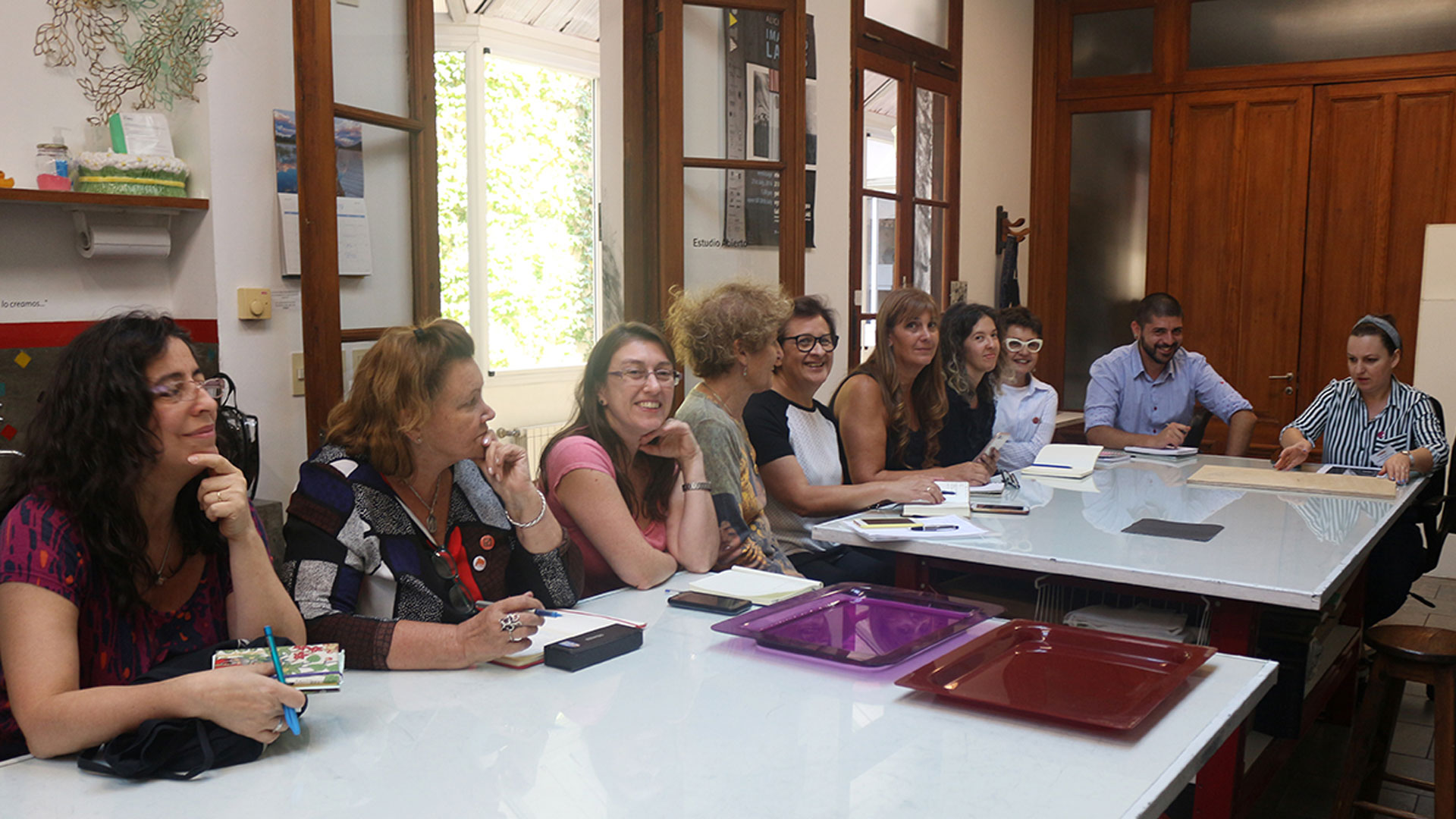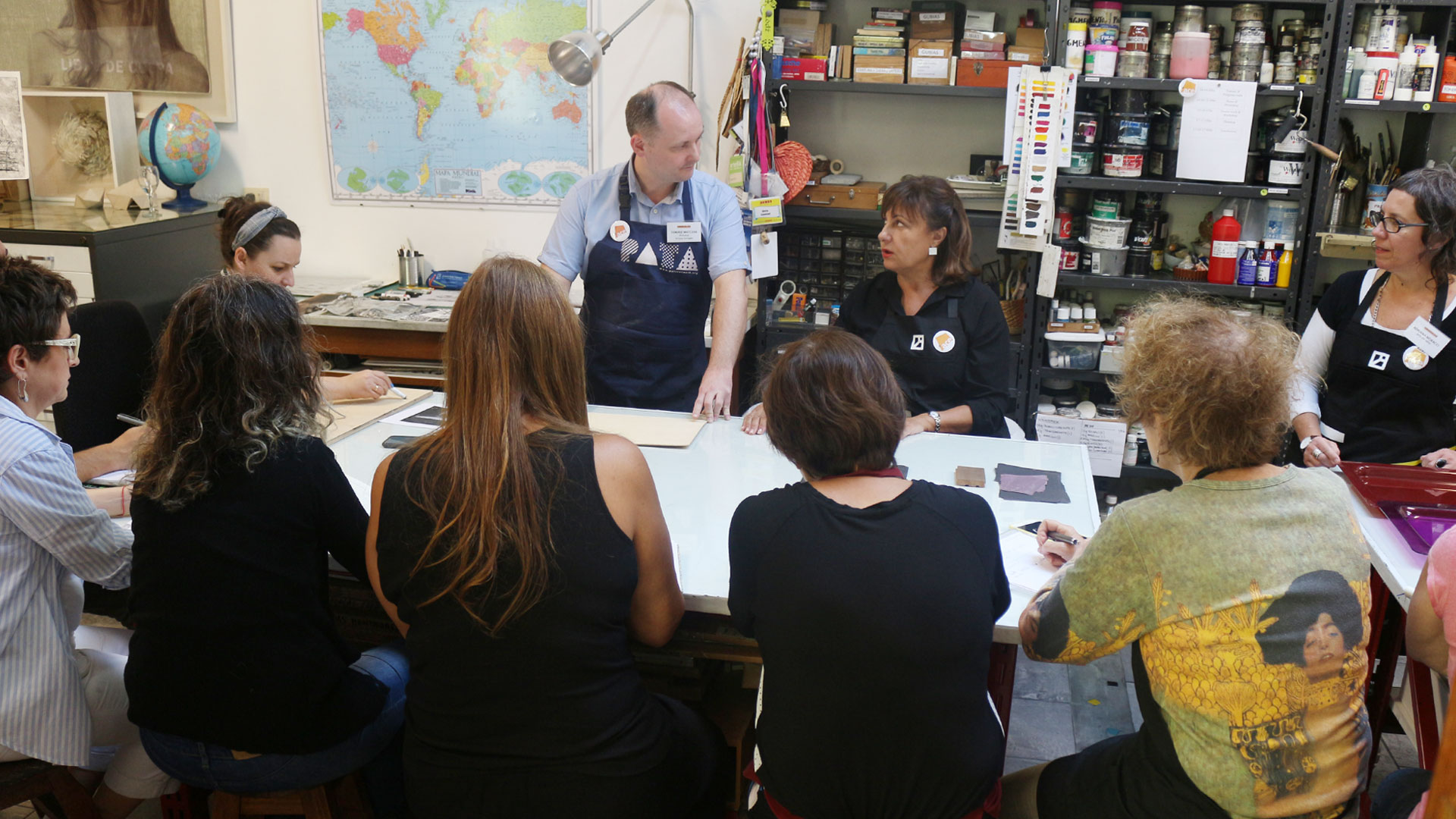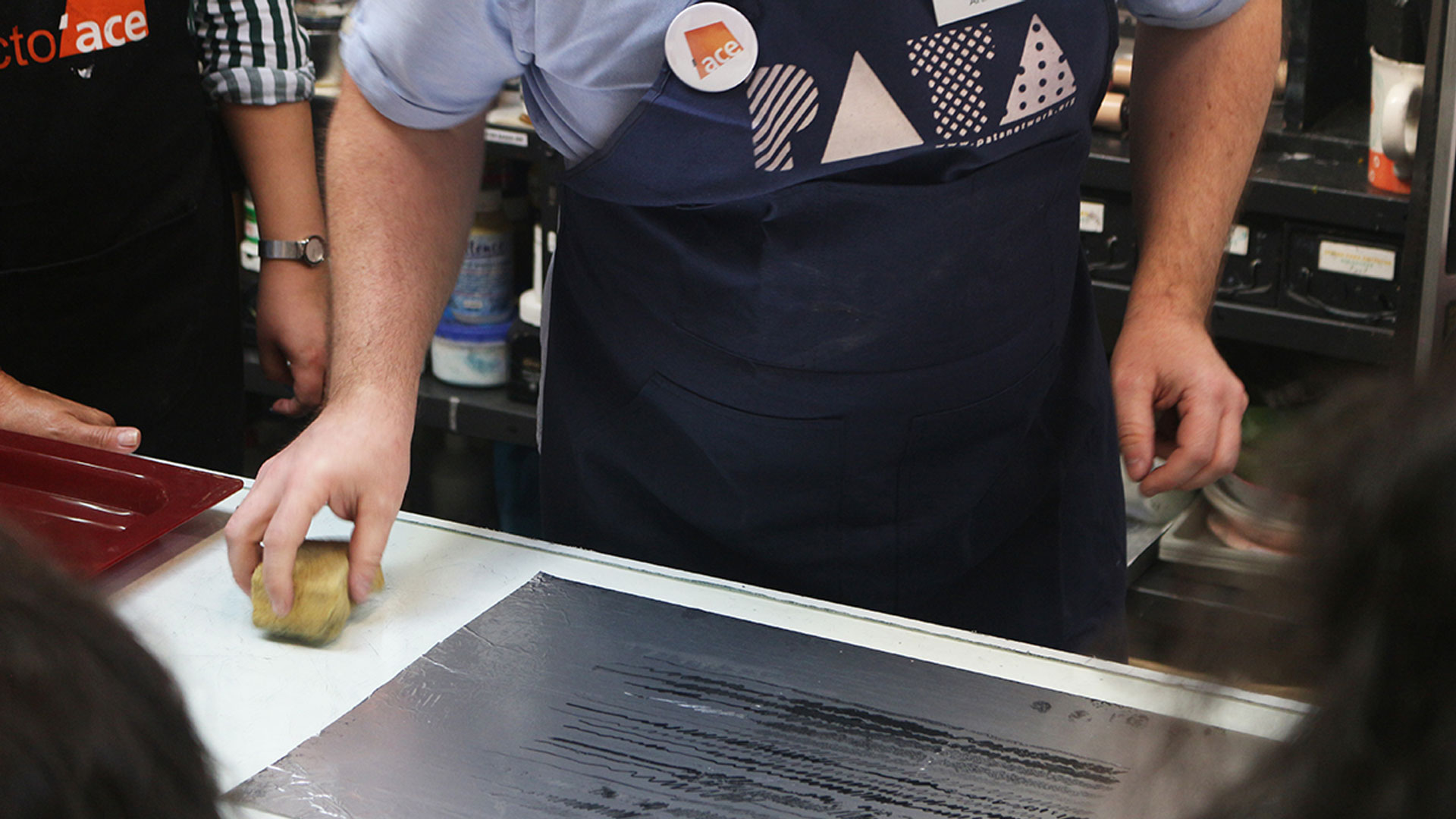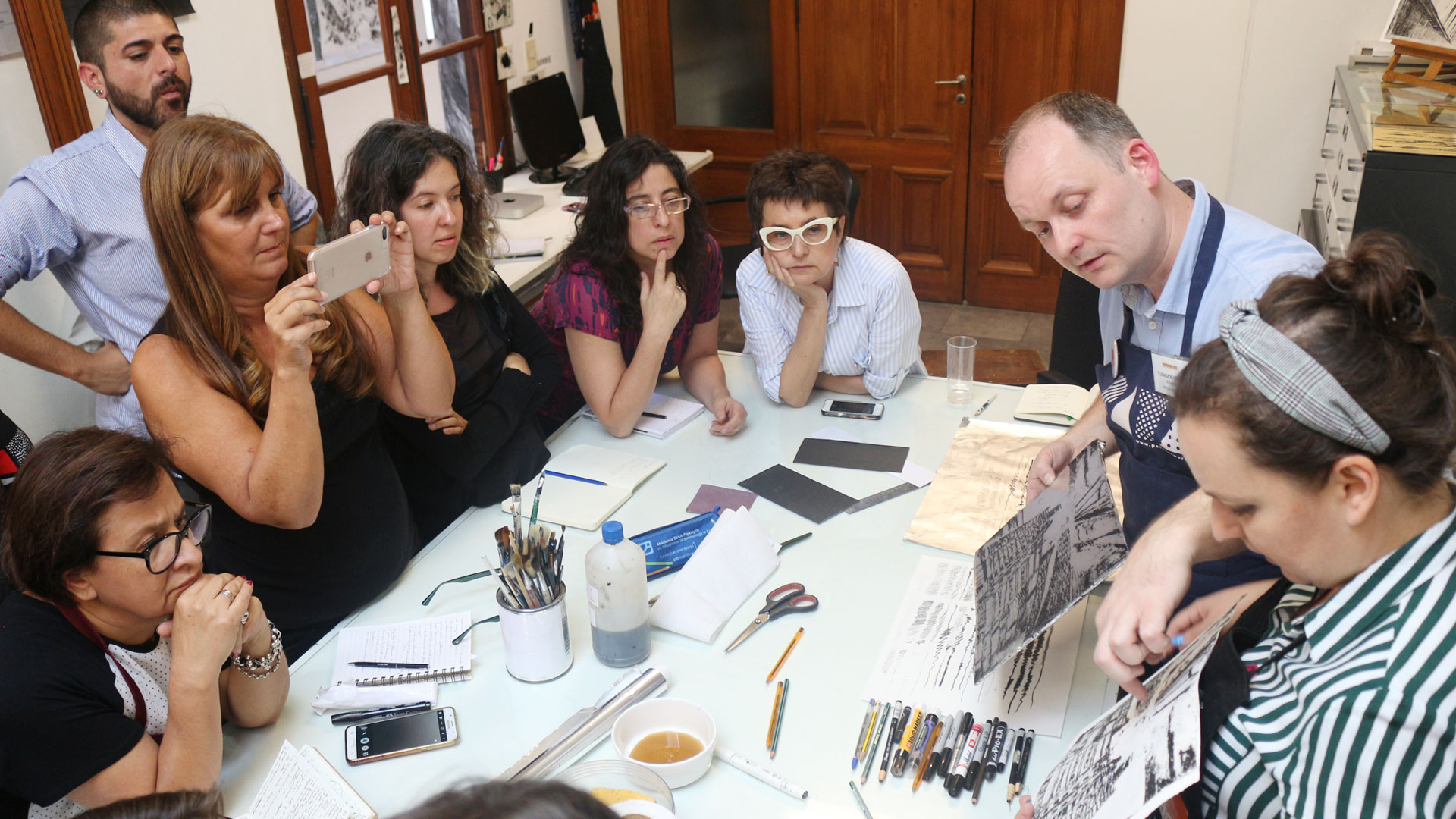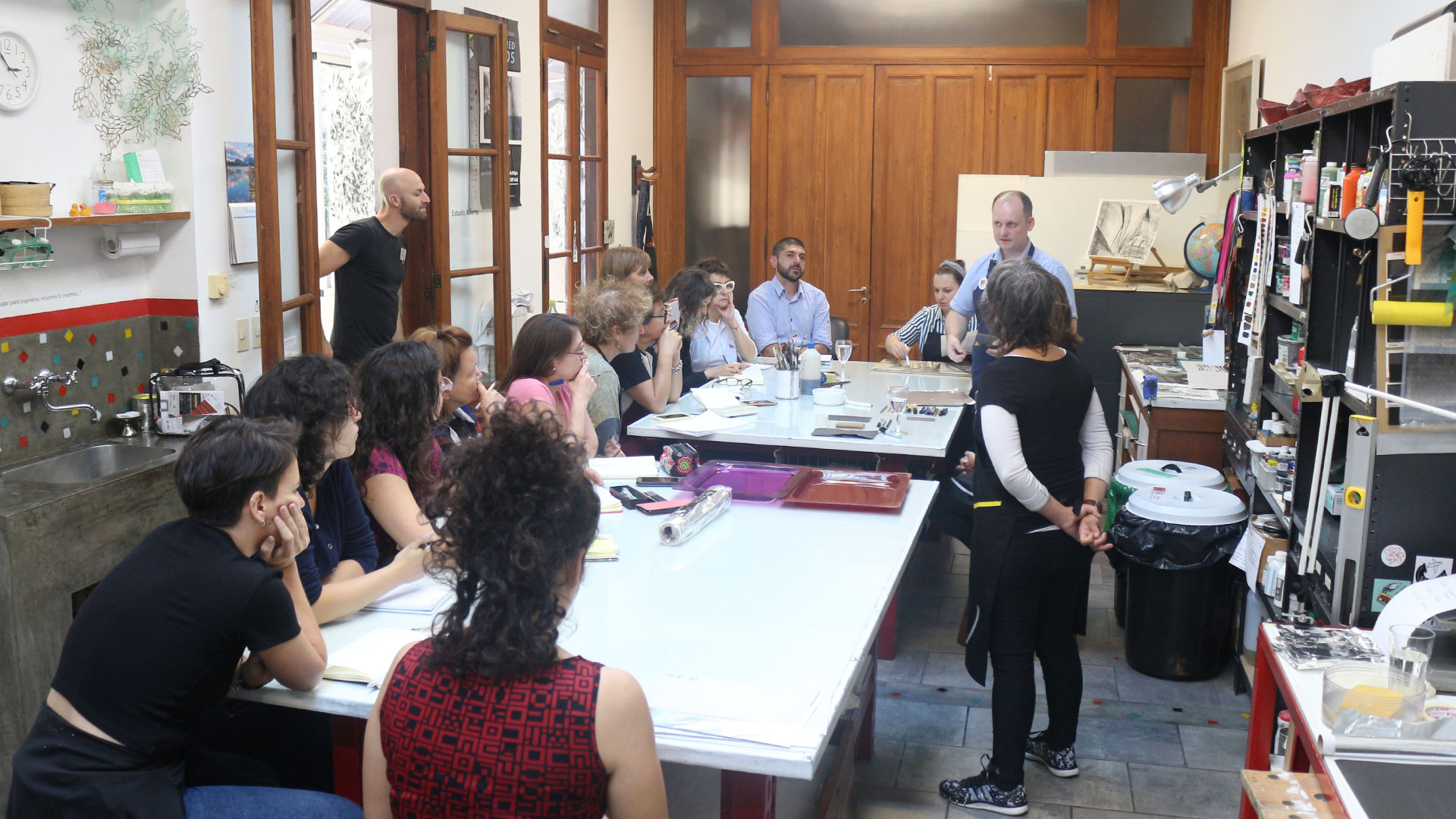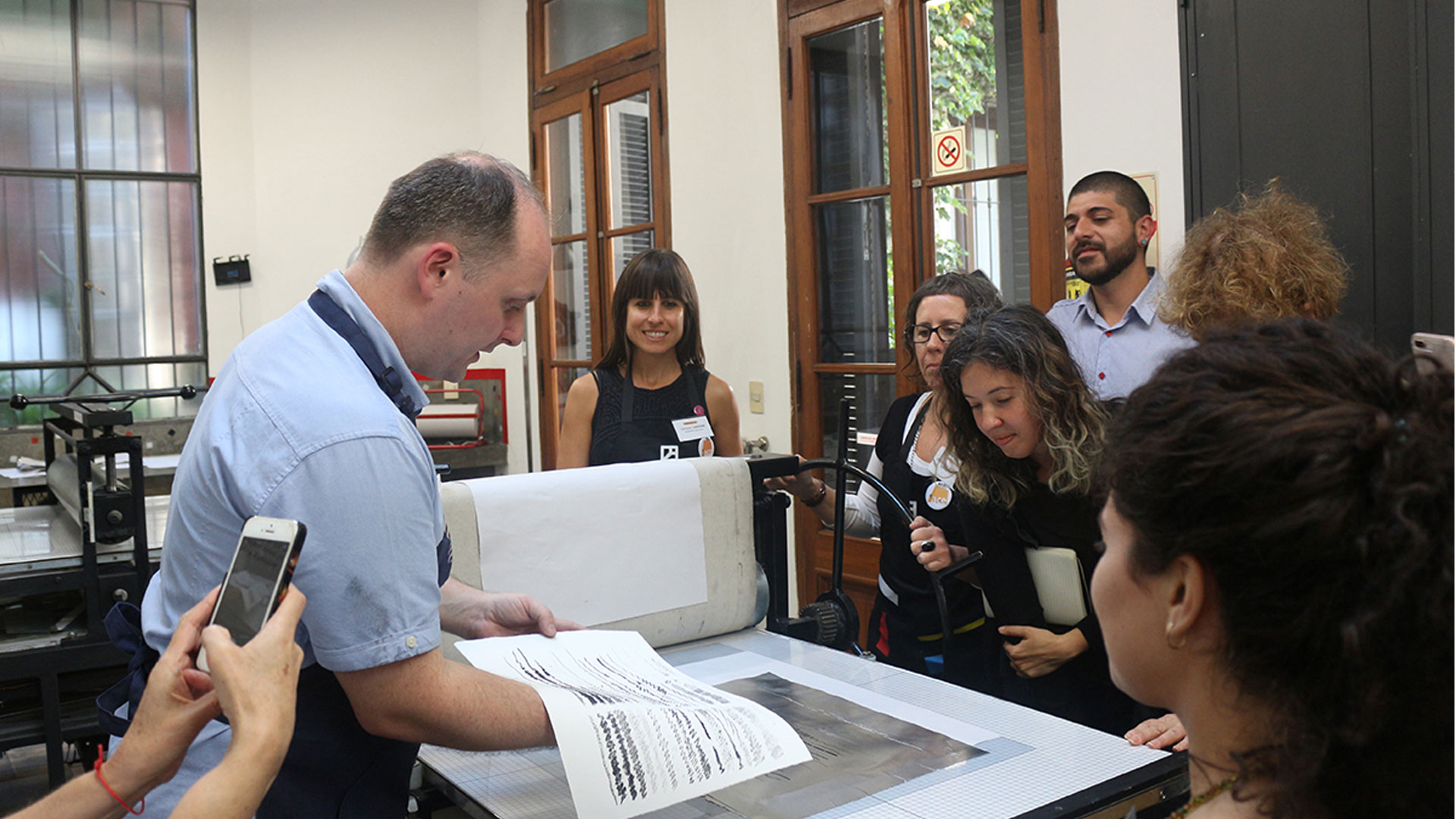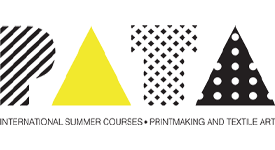Activities
Workshops
Algraphy workshop
Tomasz Matczak
27.02.19
As part of an exchange partnership that Fundación´ace has with the Academy of Fine Arts and Design in Lodz, Poland, guest artist Tomasz Matczak, conducted a workshop on non-toxic methods in lithography and will shared his experiences and technical discoveries with the participants. This was part of a full-day encounter with Tomasz and Alicja Habisiak-Matczak, who gave a conversational conference about the exhibition she showed at the Políglota Room and her work as head of the PATA workshops, in the Arts and Design Academy, Lodz, Poland.
ABOUT ALGRAPHY (introduction to non-toxic litho)
Algraphy is an alternative lithographic technique using aluminium plate as matrix.
One of its types is called “kitchen litho” because of the simplicity of the process and the availability of the materials needed. The drawing is made on kitchen aluminium foil with any greasy or permanent drawing material – soap, lithographic crayons, eye pencil, soft pencils, permanent markers, ball pens, etc. The plate doesn’t need to be grained which saves a lot of time. The etching agent is also easily available – it is the phosphoric acid found in drinks such as Cola.
This technique doesn’t require lithographic press—prints can be made or intaglio press or even without any press with simple tools, like a spoon or a bookbinding bone. It is becoming very popular worldwide and many artists develop their own versions of this method.
Related artists
BIO
PhD Tomasz Mazack (1977, Lodz, Poland)
PhD in Art and Associate Professor at the Lithography Studio of the Strzemiński Academy of Fine Arts Łódź , since 2006 he heads “Graphic Diversity” Course at PATA: Printmaking and Textil Art Summer Courses. academy of Fine Arts, Lodz, Poland.
He conducts research on extending the possibilities of planographic print, using polyester plates, ferrographic technique with iron plates and non-toxic methods of creating lithographic matrices.
